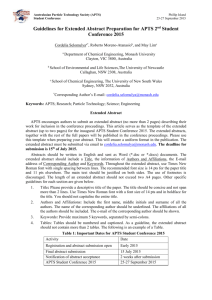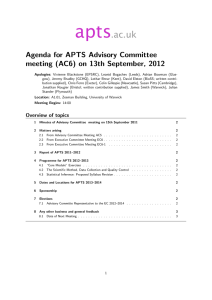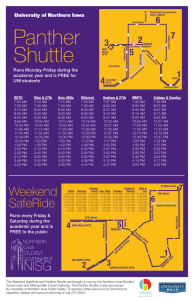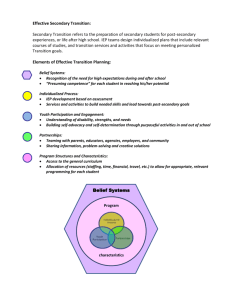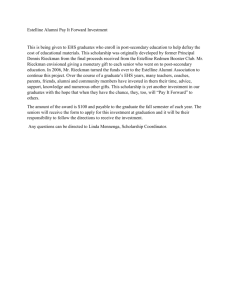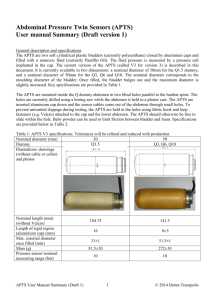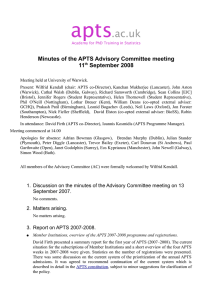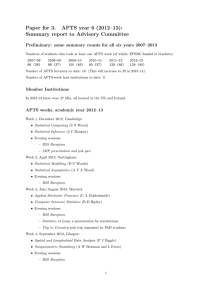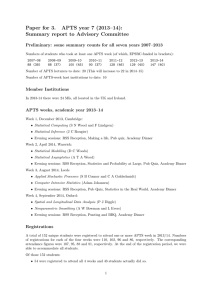An Exploration of How Artistic Pedagogical Technologies Influence
advertisement
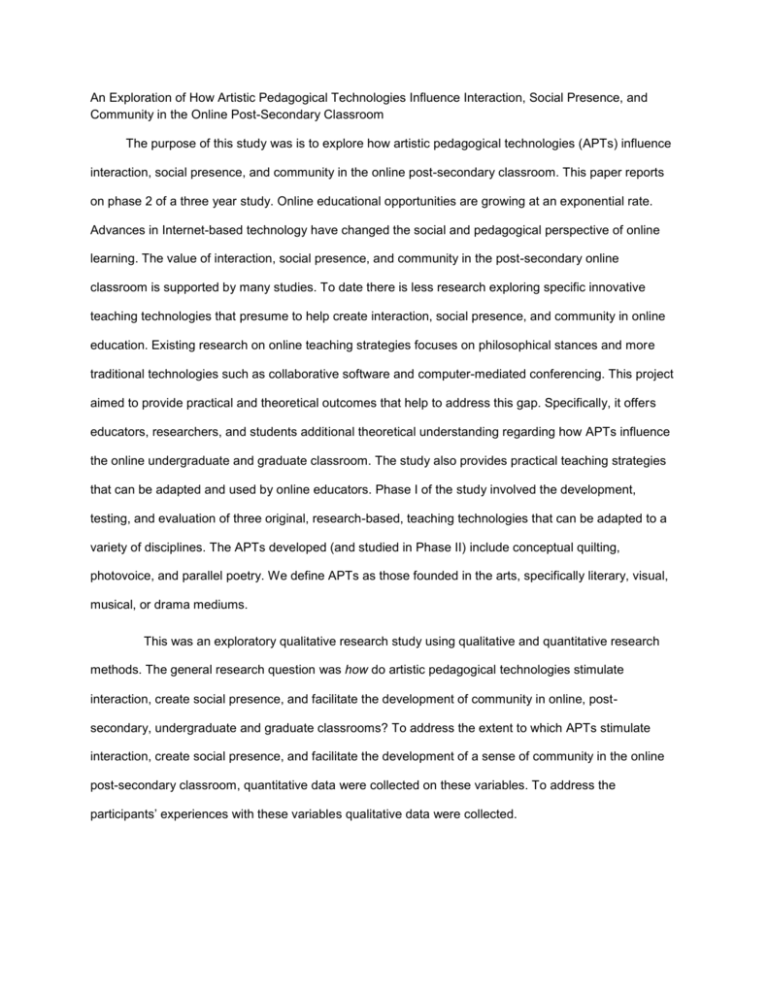
An Exploration of How Artistic Pedagogical Technologies Influence Interaction, Social Presence, and Community in the Online Post-Secondary Classroom The purpose of this study was is to explore how artistic pedagogical technologies (APTs) influence interaction, social presence, and community in the online post-secondary classroom. This paper reports on phase 2 of a three year study. Online educational opportunities are growing at an exponential rate. Advances in Internet-based technology have changed the social and pedagogical perspective of online learning. The value of interaction, social presence, and community in the post-secondary online classroom is supported by many studies. To date there is less research exploring specific innovative teaching technologies that presume to help create interaction, social presence, and community in online education. Existing research on online teaching strategies focuses on philosophical stances and more traditional technologies such as collaborative software and computer-mediated conferencing. This project aimed to provide practical and theoretical outcomes that help to address this gap. Specifically, it offers educators, researchers, and students additional theoretical understanding regarding how APTs influence the online undergraduate and graduate classroom. The study also provides practical teaching strategies that can be adapted and used by online educators. Phase I of the study involved the development, testing, and evaluation of three original, research-based, teaching technologies that can be adapted to a variety of disciplines. The APTs developed (and studied in Phase II) include conceptual quilting, photovoice, and parallel poetry. We define APTs as those founded in the arts, specifically literary, visual, musical, or drama mediums. This was an exploratory qualitative research study using qualitative and quantitative research methods. The general research question was how do artistic pedagogical technologies stimulate interaction, create social presence, and facilitate the development of community in online, postsecondary, undergraduate and graduate classrooms? To address the extent to which APTs stimulate interaction, create social presence, and facilitate the development of a sense of community in the online post-secondary classroom, quantitative data were collected on these variables. To address the participants’ experiences with these variables qualitative data were collected. Participants included a convenience sample of 20 graduate students who had completed one of several online courses on teaching health care professionals in 2011. The courses were offered by one online university and taught by three different instructors although the course curriculum was the same for all offerings of the course. Students were recruited through an email sent to them individually by the research assistant (RA) after the final grades for their course were official. The RA continued to recruit participants via follow-up email invitations until a sample of 20 respondents consented to participate. In phase I on this study the data collection instrument and the focus group processes were trialed and refined. Phase 2 used these refined tools/processes. Phase 2 involved data collected using an online survey (constructed using SurveyMonkey) and telephone focus groups. Those who consented to participate were contacted via e-mail by the RA and invited to complete the online survey which was based on the Social Presence Scale (Richardson & Swan, 2003) and the Sense of Classroom Community Index Rovai, Lucking, & Cristol, 2001). The survey was available on secure website developed for this study. This survey examined students’ perceptions of the effect of the APTs on interaction (including interaction between students and course materials, students and students, and students and the teacher), social presence, and the culture of community. Demographic data, Likert type items to assess the students’ overall perceptions of course, and indicator statements related to interaction, social presence, and culture of community resulting from the artistic based teaching strategies were included on this survey. At the conclusion of the online survey participants were asked to check a box if they would be willing to participate in a telephone focus group. A randomly selected group of those who were willing to participate in the focus group were contacted via email by the RA and invited to participate. The focus group data collection strategy provided data to illuminate the findings, and to add context in terms of the how the study technologies influenced the participants’ experiences of interaction, social presence, and community. Participants were questioned regarding perceived links (if any) between these factors. Three focus groups (with 3 participants each) took place via teleconference. The moderator (the RA) of the online focus groups introduced the purpose of the group, laid the ground rules, initiated the discussion by posing general questions, and provided probes as necessary. The questions used to initiate and guide the focus group(s) were refined during phase 1 focus group experiences. The focus group conversations were recorded and transcribed. In terms of data analysis, quantitative data from online survey were analyzed using correlations. Qualitative data from the open-ended questions on the online survey and data collected during the focus groups (transcripts) were saved to a word processing program and systematically analyzed using a process similar to narrative analysis. Specifically, the participant’s narrative comments were read several times by each team member; fragments of sentences or groups of sentences expressing a key idea were highlighted; and these were grouped to identify core themes. The discovery of the themes was aided by using three points of reference; recurrence of ideas within the narrative data (ideas that have same meaning but different wording); repetition (the existence of the same ideas using the same wording); and forcefulness (verbal or nonverbal cues that reinforce a concept). NVivo10 was also be used to manage data and assist with data analysis of the qualitative data. The study found that interaction, social presence and the sense of community was enhanced in courses in which the specified APTs were used as teaching strategies. These outcomes were achieved through stimulating innovation and creativity, modeling risk-taking, personalizing interactions, developing a trust and conveying respect, and promoting learner control over learning. These findings were the major themes identified during data analysis. Findings suggest that for some course content and student populations adding APTs to the repertoire of pedagogical technologies may have positive benefits for graduate students as interaction is enhanced, the experience of social presence increased, and a culture of community is facilitated in the online post-secondary classroom.
